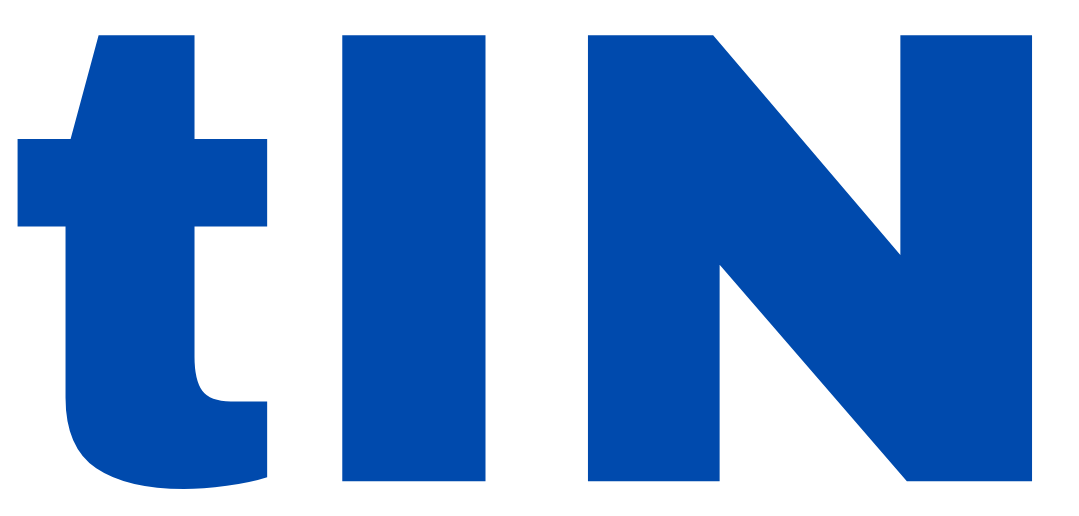Are you frustrated with the constant issues popping up on your website? Do you find yourself spending hours trying to troubleshoot and fix common website problems? Well, look no further! In this how-to guide, I will share with you some valuable tips and tricks for website maintenance. From troubleshooting errors to fixing bugs, we will cover it all. So, grab your laptop, put on your problem-solving hat, and let's dive into the world of website maintenance together. By the end of this guide, you'll be equipped with all the knowledge and confidence to tackle any website issue that comes your way. Let's get started!
Quick Tips
Tip 1: Clear your browser cache. Doing this can often resolve issues like pages not loading correctly or images not displaying properly. To clear your cache, simply go to your browser's settings, find the “clear browsing data” option, and choose to clear your cache.
Tip 2: Check for broken links. Broken links can make your website look unprofessional and frustrate your visitors. Use a free online tool to scan your site for broken links and then fix or remove them to provide a better user experience.
Tip 3: Update your plugins and themes regularly. Outdated plugins and themes can cause compatibility issues and security vulnerabilities on your website. Make sure to regularly check for updates and install them to keep your site running smoothly and securely.
Tip 4: Test your website on different devices and browsers. Not all visitors to your site will be using the same browser or device, so it's important to ensure your website looks and functions correctly across different platforms. Use online tools or ask friends to test your site on various devices and browsers, making any necessary adjustments for a seamless user experience.
Conduct routine backups of your website to protect against data loss
Backing up your website is an essential task to ensure the protection of your valuable data. Here's a step-by-step guide on how to conduct routine backups and safeguard against potential data loss. Firstly, begin by selecting a reliable backup solution, such as a cloud storage service or a backup plugin. These tools automate the backup process and make it easier for you to access your backups when needed. Next, determine the frequency of your backups based on the rate of content updates on your website. For frequently updated websites, it's recommended to perform backups on a daily or weekly basis.
Once you've chosen a backup solution and determined the frequency, it's time to initiate the backup process. Start by logging into your website's admin dashboard and locating the backup tool you've installed. Select the desired backup options, such as including database files, media files, or theme files. It's crucial to include all essential components to ensure a comprehensive backup. After configuring your backup options, click on the “Backup” button to initiate the process. Depending on the size of your website and the chosen backup solution, the process may take a few minutes or longer.
After the backup is complete, it's vital to store your backups in a secure location. This ensures that even if your website experiences a catastrophic failure, your data will remain safe and accessible. One option is to store backups on a remote server or cloud storage service. Another option is to download the backups to your local computer and create multiple copies on external drives or USB storage devices. Remember to regularly update your backups to ensure they reflect the latest version of your website. By following these simple steps, you can conduct routine backups of your website and protect against potential data loss.
Conduct routine backups of your website to protect against data loss
Regularly update plugins, themes, and software to prevent security vulnerabilities
Regularly updating plugins, themes, and software is crucial to maintaining a secure digital environment. By keeping these components up to date, you can prevent potential security vulnerabilities. To do this, start by checking for updates regularly. Most plugins, themes, and software will notify you when updates are available. By regularly checking for updates and applying them in a timely manner, you can enhance the security of your website or system.
Updating plugins, themes, and software is a relatively simple task. When you receive a notification that updates are available, simply navigate to the appropriate section of your admin dashboard. From there, you can easily see which components need updates and apply them with just a few clicks. It is important to note that updates often include security patches that address known vulnerabilities. By actively staying on top of these updates, you can fortify your website or system against potential threats.
Neglecting to update plugins, themes, and software can leave your digital environment vulnerable to cyberattacks. Hackers often exploit security vulnerabilities in outdated components to gain unauthorized access to your website or system. By regularly updating your plugins, themes, and software, you are taking a proactive approach to security. Remember, when it comes to protecting your digital assets, staying updated is key.
Check for broken links and fix them promptly to improve user experience
You know how frustrating it is when you click on a link and it leads you to a dead end? That's why it's important to regularly check for broken links on your website and fix them promptly. By doing so, you can significantly improve the user experience for your visitors. Thankfully, it's not as daunting of a task as it may seem.
The first step in checking for broken links is to use an online tool or plugin that can crawl your website and identify any broken links. This will save you a lot of time compared to manually checking each page. Once you have the results, go through each broken link and fix them. This may involve updating the URL, removing the link if it's no longer valid, or redirecting it to the correct page. By taking the time to fix these broken links, you ensure that your visitors can smoothly navigate through your website without any frustrating dead ends.
In addition to using automated tools, another effective way to check for broken links is to regularly click on all the links on your website yourself. Put yourself in the shoes of your visitors and make sure each link leads to the intended destination. If you come across any broken links, fix them promptly. Not only does this improve the user experience, but it also shows your visitors that you care about the quality of your website. Remember, a seamless and hassle-free browsing experience keeps your visitors engaged and encourages them to stay on your site longer. So, don't underestimate the impact of fixing broken links – it's a simple yet powerful way to enhance user experience.
Optimize images and compress files to improve website loading times
Optimizing images and compressing files can significantly improve the loading times of your website. By doing so, you ensure that your visitors have a smoother and faster experience when accessing your site. To optimize your images, start by resizing them to the appropriate dimensions for your website. Large, high-resolution images can slow down your site's loading speed. Additionally, consider using image compression tools that reduce the file size without compromising image quality. These techniques will help your website load quickly, regardless of your visitors' internet speed.
Compressing files is another effective way to enhance your website's loading times. Before uploading any files, such as CSS or JavaScript, take the time to minify them. This process involves removing unnecessary characters, spaces, and line breaks from the code, ultimately reducing the file size. You can use online tools or plugins to automate this process and simplify the task. By compressing your files, you'll ensure that your website's components load efficiently, allowing for a quicker and more enjoyable browsing experience for your users.
In general, optimizing images and compressing files are vital steps to reducing the load time of your website. By resizing and compressing images, you'll reduce the size of your web pages, resulting in faster loading speeds. Similarly, by minifying your files, you'll eliminate unnecessary components, making the loading process more efficient. Taking these simple actions will make a noticeable difference in your website's performance, providing a better experience for your visitors and increasing the chances of them staying on your site for longer.
Conclusion
Consequently, in order for a website to run smoothly and securely, it requires constant monitoring, backups, and updates. By regularly monitoring the site's speed, you can identify and address performance issues immediately, creating a seamless user experience. Conducting routine backups safeguards against potential data loss, providing peace of mind. Additionally, regularly updating plugins, themes, and software prevents security vulnerabilities, protecting your website and its visitors from potential threats. By implementing these website maintenance tips, you can enhance the overall functionality and reliability of your website, ultimately improving your online presence and the experience of your audience.
FAQ
FAQ: Website Maintenance Tips – Troubleshooting And Fixing Common Website Issues
Q1: What are some common website issues that occur during website maintenance?
A1: Some common website issues that can occur during maintenance include broken links, slow loading times, plugin or theme conflicts, database errors, server-related issues, and security vulnerabilities.
Q2: How can I fix broken links on my website?
A2: To fix broken links, you can use a link-checking tool to identify them. Once you have a list of broken links, you can either update the links with the correct URL or remove them entirely. It's crucial to regularly check and fix broken links on your website to ensure a seamless user experience and improve search engine optimization (SEO).
Q3: What can I do to improve my website's loading speed?
A3: To improve your website's loading speed, you can undertake various optimizations. Start by optimizing the images on your site by compressing them without compromising quality. Minimize HTTP requests by combining CSS and JavaScript files, enable browser caching, implement gzip compression, and use a content delivery network (CDN) to deliver your site's content faster to users across the globe.
Q4: How can I resolve plugin or theme conflicts that affect my website's functionality?
A4: To resolve plugin or theme conflicts, start by deactivating all plugins temporarily. Then, reactivate them one by one, checking your website's functionality after each reactivation. This will help you identify the specific plugin creating the conflict. Similarly, if you suspect a theme conflict, switch to a default theme temporarily and see if the issue persists. If the problem is resolved, you'll need to contact the plugin or theme developer for further assistance.
Q5: What should I do if my website encounters database errors?
A5: If you encounter database errors, make sure to create a backup of your database before attempting any fixes. Start by repairing the database using a tool like phpMyAdmin or a WordPress plugin with database repair capabilities. If repairing doesn't solve the issue, you may need to optimize your database or contact your web hosting provider for support.
Q6: What steps should I take if my website experiences server-related issues?
A6: If your website experiences server-related issues, it's essential to contact your web hosting provider as they have the technical expertise to assist you. Provide them with detailed information about the issue, such as error messages received, and they should be able to diagnose and resolve the issue promptly.
Q7: How can I ensure my website is secure during regular maintenance?
A7: To ensure website security during maintenance, perform regular backups of your site's files and database. Update your content management system (CMS), plugins, themes, and any other software you use to their latest versions regularly. Utilize strong passwords, secure file permissions, and implement a firewall and security plugins to protect your website from potential threats.
Q8: What can I do to prevent website issues from occurring in the first place?
A8: Regular website maintenance is crucial in preventing issues. Create a maintenance schedule to check for broken links, update software, and perform regular backups. Monitor your website's performance using tools like Google Analytics, and regularly review your website's security measures. Staying proactive and vigilant can significantly reduce the chances of encountering website issues.
Remember, troubleshooting and fixing website issues can sometimes be complex. It is advisable to consult a professional web developer or seek appropriate technical support if you're unsure or lack the necessary expertise.






